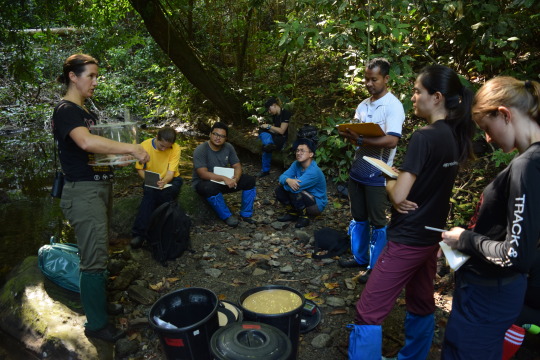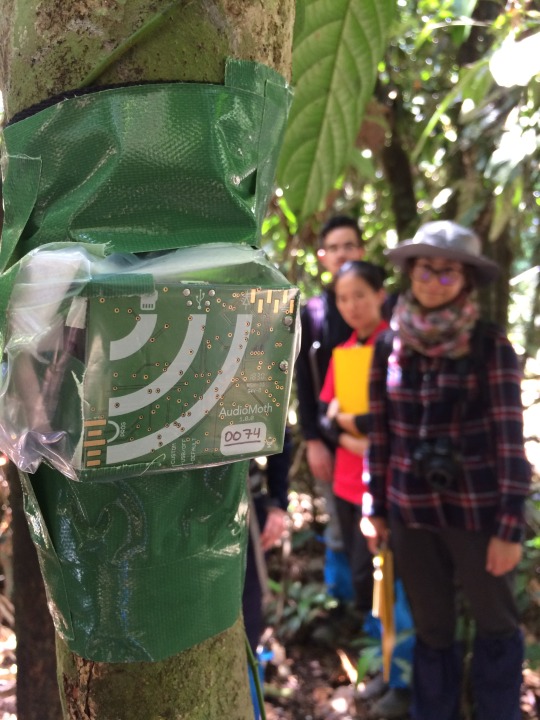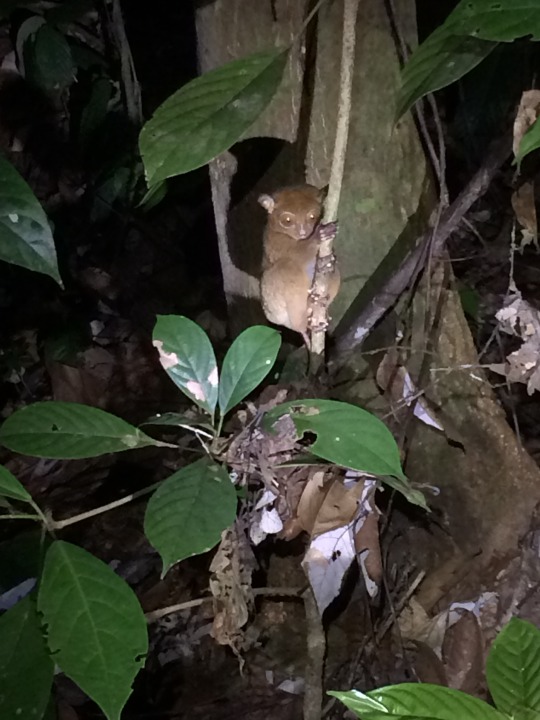By Jennifer Sheridan

As some of you know, my main field research takes place in Malaysian Borneo, in the state of Sabah. I travel there frequently for work (ecological fieldwork), and I was lucky enough to be asked to serve as an instructor for a graduate field course held at one of my main field sites in October of this year. This particular site, Danum Valley Conservation Area, is one of the largest expanses of lowland primary forest remaining in Borneo, and because I have been going there regularly since 2010, it holds special meaning for me. Thus, I was very eager to share my enthusiasm for and knowledge of this place and its herpetological inhabitants with students.

This particular field course is run by the Tropical Biology Association, based out of Cambridge (UK). TBA courses are wonderful for many reasons, but one of my favorite features is that they are an even mix of students from Europe and, in the case of the Danum course, Southeast Asia. Because students in SE Asia don’t always have the same opportunities for continued graduate education as do students in Europe and the US, this course provides much-needed capacity building in a region that suffers from the highest rate of deforestation (and thus biodiversity loss) in the world. This year’s course featured students from 12 countries, and was nearly 2/3 female—another important capacity-building measure, given that women remain underrepresented in the sciences.

The structure of the course is also one that I think works well: two weeks of detailed field instruction and exercises, introducing students to methods of surveying and studying multiple taxonomic groups, followed by two weeks of students working in small groups to design, execute, and present original research projects. For me, as a scientist working at the site long-term, this structure also allows me to test new methods or gather pilot data for potential future projects. This year I supervised two groups who chose to work on frogs: one group who radiotracked a species of frog that had never been tracked before, and one group who measured the biomass of frogs on three different streams. The former project was intended to serve as pilot data for future radiotracking studies in primary and disturbed forest areas, to determine whether movement patterns and dispersal of amphibians are impacted by fragmentation. The latter project was partly because I had never measured this before and was curious what the biomass of frogs on these streams was, and partly because knowing biomass, in addition to abundance and diversity, can help ecologists like me better understand how loss of species or communities (multiple species of frogs, for example) impacts ecosystem function. Both of these projects, though small, will be written up by myself and the students who conducted them, and submitted to regional peer-reviewed journals for publication. In science, publications such as this are important both for me as curator, as well as for students just beginning their careers.

In addition to the wonderful educational and research opportunities this course afforded all of us, I happen to just love being in the field. I wake up to the sound of gibbons or birds calling. I get to hike through the jungle to get to my pristine streams (most frogs in Borneo are stream-breeders), which are so beautiful. I can talk shop with other researchers, like the fellow instructor I met who studies carbon stocks of Sabah forests, and who will now collaborate with me on my long-term research project. I look for frogs along streams at night, and in doing so I get to see loads of other wildlife, like snakes, sleeping lizards and birds, fluorescent caterpillars, glow-in-the-dark fungi, mouse deer, civets, slow loris, tarsier, and clouded leopard, just to name a few. The dual nature of my job—sitting at my desk analyzing data, managing the section of amphibians & reptiles, and writing papers, then going out and living and working in the jungle—is one of the greatest things about being a scientist, and one of the reasons I love being a curator. This was one of the greatest field months of my life thanks to the amazing students, my fellow instructors, and the luck of seeing so much great wildlife, and now I get the pleasure of sharing the results of that trip with the public as well as the scientific community, while exploring other projects with our expansive museum collections. I really can’t imagine doing anything else.
Jennifer A. Sheridan is the Assistant Curator in the Section of Herpetology at the Carnegie Museum of Natural History. Museum employees are encouraged to blog about their unique experiences and knowledge gained from working at the museum.
